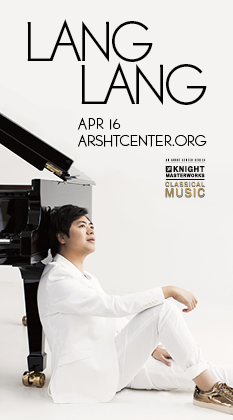Multimedia “Gotham” is a high-voltage whirl of sight and sound

The New World Symphony’s Sounds of the Times series delved into the New York state of mind with a sampling of contemporary scores by members of the Bang on a Can collective conducted by Jeffrey Milarsky Saturday night at the Lincoln Theater.
Over the past three decades, many contemporary composers have sought to write music that is more accessible and listener friendly, instead of the academic serialism and atonality that dominated the new music scene in the 1950’s and 60’s. Strongly influenced by rock and world music as well as twentieth-century classical trends, the Bang on a Can creators like to blend sophisticated modernism with a hip sensibility.
Michael Gordon (a graduate of Miami Beach High School) collaborated with filmmaker Bill Morrison on Gotham in 2004. Synched to Morrison’s striking cornucopia of modern and historic images of New York City, Gotham is a three-movement tone poem. Utilizing an amplified orchestra with electric guitar and electric bass, Gordon has created a vibrant portrait of the city, by turns ruminative and frantic. Although the score was written before Morrison had completed his film, music and visuals blend seamlessly in a multimedia symphony of light and sound.
In the first section, Morrison’s historical black-and-white footage of sheep in Central Park and balloon rides is paired with a hauntingly elegant soundscape. A solo violin plays a tenderly beautiful melody, reminiscent of Satie’s Gymnopedie, that builds to a full orchestral glow of lush string textures and mellow brass chorales. Anastasia Storer displayed voluptuous tonal hues and nuanced phrasing in the impressively scaled solo part.
The fast-moving images of the second movement bring howls and roars in an exhilarating racket of brass and percussion, played at fierce speed. A zippy theme introduces the Bartok-infused finale, a canon that swells to full blown orchestral crescendo. This flourish is interrupted by sudden silences as Morrison’s color film displays the subway station adjacent to the former World Trade Center site, a poignant conclusion to this brilliantly conceived work. Gordon’s mastery of orchestral color and bursts of astringent energy are reminiscent of Stravinsky’s Rite of Spring. New music specialist Milarsky led the New World musicians in a high-voltage, whirlwind performance.
Preceding Gordon’s tour de force, Evan Ziporyn’s War Chant commenced with wind figures that would not have been out of place in Debussy’s La Mer, only to morph, disappointingly, into a lavish Technicolor film score. Ziporyn contributes some flashy brass writing which the gifted young musicians blared gloriously.
David Lang’s Pierced is an ingenuously crafted concerto for cello, piano, percussion and strings. The soloists and orchestra play totally divergent material that seems to coalesce. Over string tremolos, the three soloists produce spiky, acerbic Minimalist rhythms, led by the marimba. Despite the piece’s modernist sensibilities, Lang’s score is a New Age neo-Baroque concerto grosso (with cello and piano continuo), rendered in high style. The trio Real Quiet (cellist Felix Fan, pianist Andrew Russo and percussionist David Cossin) performed with dazzling virtuosity, Milarsky’s taut pacing and rhythmic urgency providing stellar support.
Posted in Performances
Leave a Comment
Sun Nov 8, 2009
at 12:53 pm
No Comments





